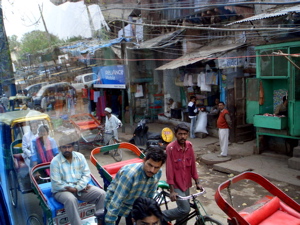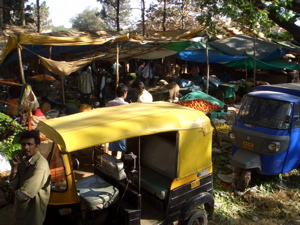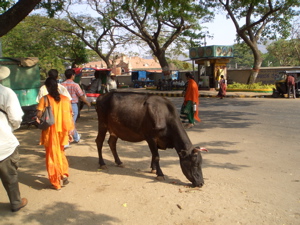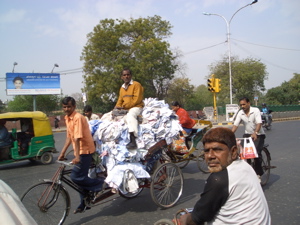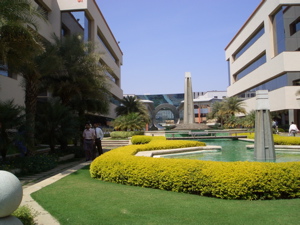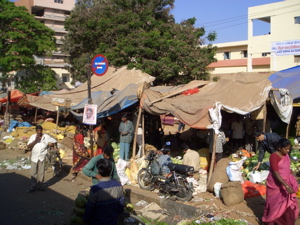
Infrastructure
India: A Long Road Ahead
China and India often are compared in the same breath by
western executives weighing sites for expansion or outsourcing, but the
reality of the situation is that in terms of infrastructure, China is
decades ahead of India – an important consideration for industries
reliant on strong power, water, transport or information
infrastructure.
Like China, India is a large country and some sections are far more developed than others, so major destinations like Bangalore or Delhi need to be considered separately from some remote province in central India. Also as in China, the massive population moving from very poor to somewhat poor is resulting in titanic shifts in demand for commodities vital to businesses, swamping the electrical grid and threatening the vital supply of freshwater. Whether your business makes high-tech gadgets or bathroom slippers, infrastructure matters and a long-term consideration of what to expect is the first step in any outsourcing plan. While the list of problems is extensive, however, an investor should keep in mind that India has just as many advantages. There is no such thing as a free lunch, and businesses should be aware of both the advantages and pitfalls of investing in India. 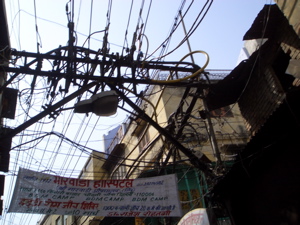 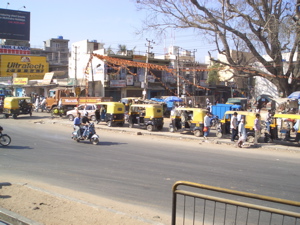 India’s overstressed power grid is one of the most obvious signs of lagging infrastructure development. The modern electronics industry is holding its breath after a the one and a half day power outage in South Korea, which crippled Samsung’s NAND flash memory production and may reduce global production of NAND memory by a fifth. In India, in contrast, power failures can and should be expected daily, even in the most developed areas of Delhi, Mumbai and Bangalore. Any respectable business or factory in India maintains a diesel generator, and the shopping malls and call centers are built atop huge storage tanks of fuel. The outages aren’t just spikes, but rather hour-long blackouts with multi-hour brownouts thrown in. Beyond keeping industrial machines and computers running, air conditioning is essential to office work in this unmercifully hot country, and even service providers must bear the burden of backup power. In a good hotel, visitors may not even notice the shift from grid to generator, but this necessity adds to the cost of building and operating a facility in India. Effectively, the government is passing the buck on infrastructure to the investor, and generator costs add up fast. Some Industrial Parks or Research Parks will provide continuous power through shared generators – for small companies this is a huge perk, as a generator will require maintenance and logistics that the park can provide. Of course the park is charging a premium for that, and for large factories this may not be as good a deal. How to operate with a generator and its logistics is a key factor in designing a factory or office in India, and finding on-site consultants is recommended. Is the situation going to improve? India’s government has committed itself to improving the nation’s power grid, but in the world’s largest democracy, government targets tend towards “Electricity for all by 2012” (a part of many politicians’ election campaigns) rather than “Reliable power by 2012” or “A well-managed grid by 2012.” One thing sure to expand is the nation’s use of electricity per capita, as the middle-class becomes wealthy enough to afford air conditioners and run them around the clock. It is estimated that between increased consumer demand and new industrial projects, over a hundred gigawatts of new power capacity are needed by 2012, of which almost 29 gigawatts are now under construction. Ultimately, the issue is not just total production but improved management, as currently both high-tech factories and residential areas suffer alike. Eventually, India’s government must realize that it will never support truly high-tech production like South Korea’s until power outages are unheard of. For now, invest in a generator. 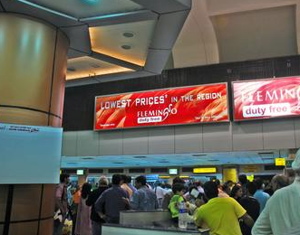
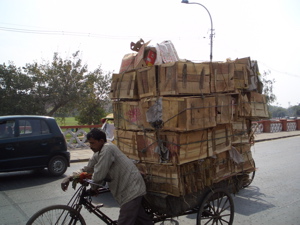 India’s airports are unfortunately the first thing a traveler sees, and they are undergoing much needed improvements. To take Delhi’s Indira Gandhi airport as an example, the airport currently is built to accommodate 12.5 million passengers a year but must deal with 16.2 million (for comparison, Thailand’s Suvarnabhumi airport is built to handle 45 million). The aesthetics of the structure aside (which are poor, with claustrophobically low ceilings in places), the check-in area actually leaks when it rains. A third terminal is being built, however, with 35 million passengers a year capacity and the modern features that international travelers have come to expect. This pattern is true across India, where currently the air facilities are sorely in need to replacement (upgrades to most would not be worthwhile), but also where those replacements are already being built and at a frenzied pace. Currently, India’s air infrastructure is overtaxed and an embarrassment to the nation, but by 2010 the new airports will go online and by the mid-2010s, India will have a strong air infrastructure. One of the advantages of having as large and decentralized a country as India, along with the drive to create a completely new air infrastructure, is that good planning and distribution can prevent many of the bottleneck issues some airports face, such as Chicago’s O’Hare. India’s intensely democratic and populist leanings are an advantage in this regard, as the government is under pressure to improve its “Second Tier” cities, both to avoid large slums forming in its main centers and to spread the coming wealth around. To that end, India’s new air cargo hub is being constructed at the poorly known city of Nagpur in central India. Combined with budget air flights flying from airports near, but not in, major cities, this bodes well for avoiding congestion as India’s aviation industry booms, and it is booming. Relaxed regulations have led to the rise of budget airlines and cargo carriers who have proven far more agile and responsive than the state-involved mammoth, Air India. In the coming years, the cost of airfreight and travel within and from India will drop and simultaneously open up new economic opportunities in India’s second tier cities now being added to the air system.
Driving in India is, without a doubt, an extreme sport. A driver on a recent trip said that “To drive in India you need three things: a good horn, good brakes and good luck!” India’s roads were mostly small one or two lane affairs until massive building projects in the past few years, and the new roads are instantly distinguishable from the old infrastructure. Old roads tend to lack physical lane dividers, and Indians treat painted dividers as guidelines rather than hard and fast rules, so traffic jams develop very quickly as drivers slip into the opposing traffic’s lane and things grind to a halt. New roads are not only wider and better paved, but with physical dividers the traffic flow is far more orderly. A new problem has cropped up, however, which is that most cars on the road (as well as lumbering trucks and motor-rickshaws) are designed for slow crawls through traffic and are vastly underpowered for a decent highway. What this means for businesses is that any truck shipments will move at, optimistically, 30 km/hr (about 15 mph) even on good roads, as trucks are not very capable at weaving and passing around motor-rickshaws, not to mention the cattle strolling freely in the streets. At India’s ports the dual problems are a lack of infrastructure and a crippling bureaucracy. This differs greatly from port to port, but in general the necessary upgrades are being made, but very slowly. The inefficiency issue is harder to fix, and is a reflection of India’s bloated public sector. The often-quoted statistic is that Shanghai’s port can turnaround a container ship in 8 hours, but the same ship in Bombay takes 3 days. Without a doubt, China or Thailand’s ports are well ahead of India’s, though again this is a matter of efficiency (and delays) and not outright capability (India can still deal with container ships, just not quickly) so this is a factor to necessarily add into time calculations, and additional costs of shipping should be considered when weighing manufacturing costs between India and other Asian countries.   Multiple factors are converging to ensure that India will suffer severe shortages of freshwater in the years to come. As the poor majority of India’s population rises to the level of running water (drinking water for everyone by 2015, as another political campaign goal), freshwater usage will spike. India’s industries are finally moving into high gear, however steel production and chemical manufacturing both require huge amounts of water. India’s population continues to grow at an alarming rate, farm yields are declining due to sloppy crop rotation and pesticide use and more farms are needing irrigation. Global warming has led to a well-documented reduction in the size of India’s glaciers, whose snowmelt feeds the country’s rivers, and the water table in the north has dropped from 60 feet ten years ago to over 300 feet today, nearly depleted. The poor will, of course, be hit hardest and an investing business will no doubt be able to afford water and food, as will their workers, however for manufacturers and other industries that require a reliable source of freshwater, shortages will become a problem. While now water availability is not an issue for factories, in ten years the situation will probably be akin to the power grid where there are rolling blackouts as reservoirs run dry and must be refilled. Likewise, factories will need to have reservoirs of freshwater onsite to provide continuous water just as they need diesel generators now. Another added and, for now, hidden cost to expect in an Indian facility. 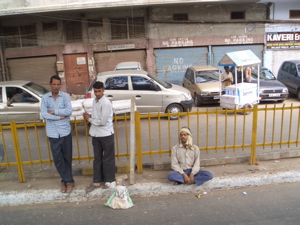 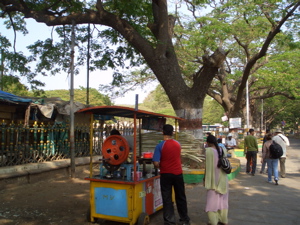 India’s rural population continues to flow towards the urban centers for work and skilled labor (including knowledge workers) move from the second-tier cities to the main hubs of Delhi, Calcutta, Bangalore and Mumbai. The national government is trying to redirect migrants to the second tier cities to prevent slums from forming, and knowledge industries are increasingly looking at second tier cities as salaries in the major cities, especially Bangalore, skyrocket. A recent college graduate can expect to make $300 a month in Delhi, over $500 in Bangalore and $150-$250 in a second tier city. Service outsourcers have noticed this, and as the data infrastructure improves in second tier cities, the 50% savings on labor is making many companies reconsider Bangalore as a destination. The nature of many service providers’ operations in India make the college graduates almost a commodity and demand can be easily met in the second tier cities for all but R&D activities. Unskilled, and even skilled, labor is abundant and the shortages seen in Eastern China and Southern Vietnam are not an issue. Workers are often satisfied with a lower standard of dorm or hostel (if any) than those in East Asia, who have come to expect sprawling dorm towns with limited, but still present amenities. In India, such housing and other issues tend to take care of themselves, however the result of this is that transport systems are not as organized as in China or Vietnam, so like much else in India decreased efficiency is traded for low cost. 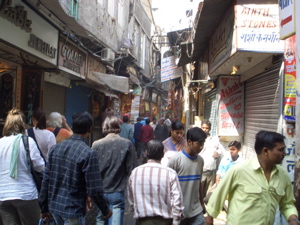 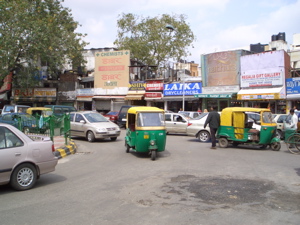 India’s cities are predominantly safe, if only because so many people are always around, and certainly mugging or murder is not a major concern. Terrorisms scares and actual attacks do occur with some frequency, however as in the US and everywhere else, the risk of actually being involved is absurdly low. More of a concern are the myriad insurgencies across India, some of which are political in nature and others verging on outright banditry. There are at least twenty distinct insurgencies in India, mostly clustered inland in the North or Northeast and in the far Northeast, where India has tenuous control over a large region connected to the country only by a 26 kilometer strip of land wrapping around Bangladesh. Some of the groups seek revolution (including Maoist rebels) and others are ethnic-based groups seeking independence. India is a swirling mix of religions and ethnicities, and due to its young age as a nation (only 60 years) many conflicts involved in its initial forming are still unresolved (including alleged kingdoms that were forced to join the nation at gunpoint). Most outsourcing destinations are on the west coast, however the local political situation should be checked before investing, especially if a less famous Second Tier city is being considered. Conclusion The choice of which city in India to base in is a unique challenge for each company and depends on what incentives are offered by the city in question and how it’s infrastructure matches a company’s needs. Bangalore is very much overheating with soaring wages and undeveloped infrastructure, leading many service providers to move their call centers to Delhi or Mumbai. Calcutta’s communist state government is providing generous incentives to lure business, and the state’s lack of previous investment make it attractive for investors of all sorts now. The second tier cities are becoming a major player in industries reliant on unskilled labor, despite the fact that goods must usually be hauled by truck some distance to the nearest port. As the utilities in these second tier cities improve, skilled labor industries and service providers will move in to take advantage of wages half those of Bangalore.
India’s infrastructure presents a bleak image, but most of the problems are surmountable with adequate planning and investment. For some industries, the problems are just too numerous and the lack of infrastructure drives investors to China and Vietnam, despite rising labor costs, worker shortages and declining government incentives. For others, India’s rock bottom wages and English-speaking workforce trump the infrastructure headaches. It is absolutely essential to plan for and budget the additional costs involv ed (such as a generator) from the beginning, or else India becomes a quagmire requiring ever more investment. If proper precautions are taken, however, India holds as much potential as China did ten years ago and the current lack of infrastructure should be seen as just another hurdle to overcome in outsourcing. |
